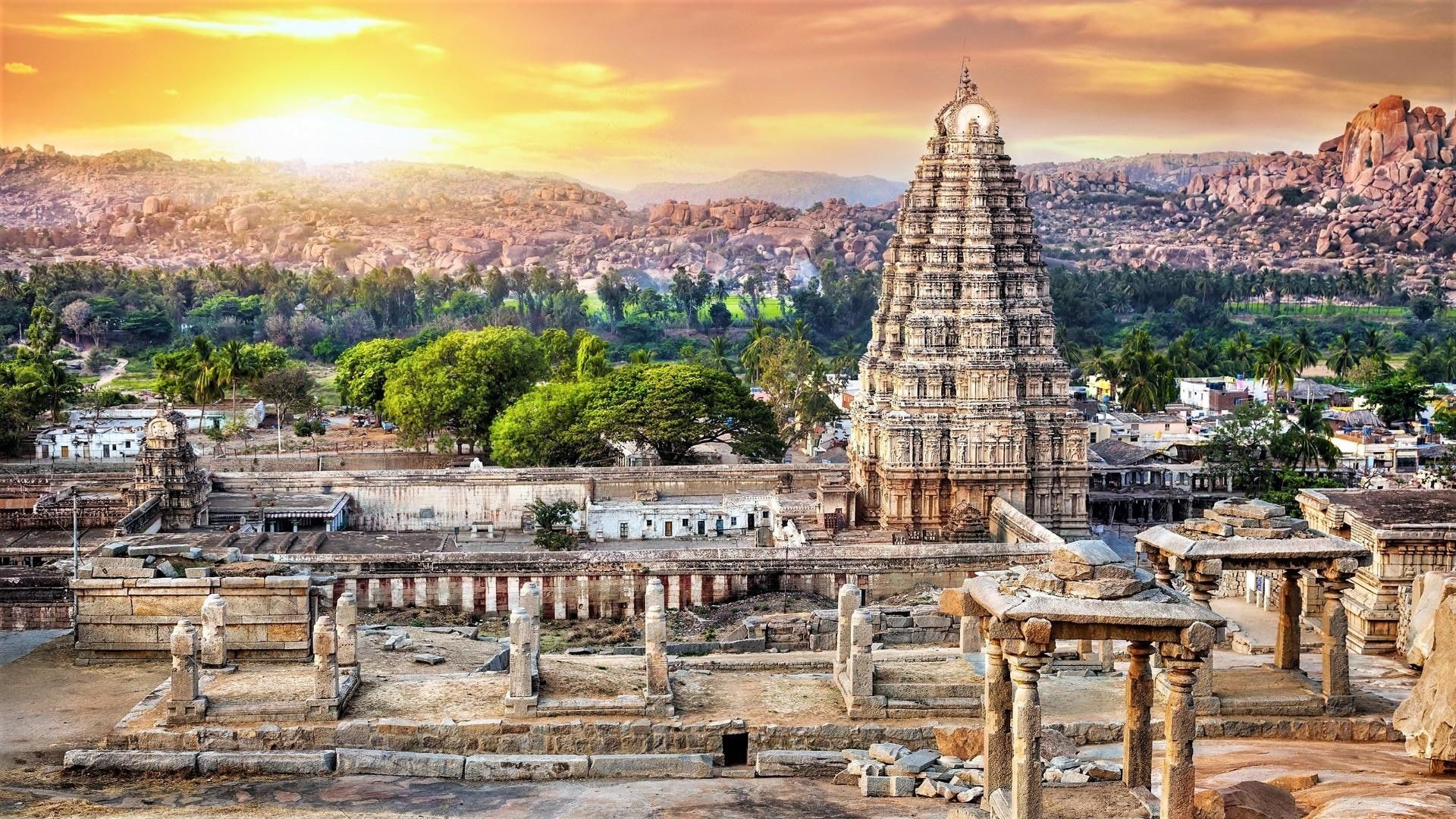
Hampi ruins
Hampi, a UNESCO World Heritage Site located in the state of Karnataka, India, is a mesmerizing complex of ancient ruins that holds a rich historical and architectural significance. Dating back to the 14th century, Hampi was once the flourishing capital of the Vijayanagara Empire, one of the greatest Hindu empires in Indian history. Spread over a vast area, the ruins of Hampi showcase the remnants of grand temples, royal complexes, market streets, and other architectural marvels. The most iconic among these is the Virupaksha Temple, dedicated to Lord Shiva, which stands tall with its intricate carvings and ornate pillars. The stunning Vijaya Vittala Temple, famous for its musical pillars that produce various musical notes when tapped, is another highlight of this archaeological site. Hampi's boulder-strewn landscape adds to its unique charm, creating a surreal atmosphere that transports visitors back in time, making it a must-visit destination for history enthusiasts and travelers seeking cultural experiences in India.
Visitors to Hampi are greeted by a captivating blend of history and natural beauty. The ancient ruins are scattered amidst a striking landscape of giant boulders and the meandering Tungabhadra River, creating a picturesque setting that enhances the overall allure of the site. Exploring the ruins, visitors can witness the genius of Vijayanagara architecture, characterized by intricate carvings, majestic gopurams (entrance towers), and well-planned urban layouts. Hampi's ruins are not merely stone structures; they tell the tale of a bygone era, offering glimpses into the grandeur of the Vijayanagara Empire. As the sun sets behind the ruins, casting a golden hue over the landscape, Hampi's aura becomes truly magical, leaving a lasting impression on anyone fortunate enough to witness its splendor.

Virupaksha Temple
Virupaksha Temple, located in the historic town of Hampi, Karnataka, stands as a testament to the architectural grandeur of ancient India. Believed to be one of the oldest functioning temples in the country, it has been an essential pilgrimage site for Hindus for centuries. The temple's origins can be traced back to the 7th century, and it has undergone several renovations and expansions over the years. What makes Virupaksha Temple truly remarkable is its intricate Dravidian-style architecture, adorned with intricate carvings and sculptures depicting various mythological themes. As the focal point of Hampi, a UNESCO World Heritage Site, the temple attracts not only devotees but also history enthusiasts and tourists from around the world, offering them a glimpse into India's rich cultural and religious heritage.
Stepping inside Virupaksha Temple is like stepping into a time capsule of spirituality and artistry. The sanctum sanctorum houses the main deity, Lord Virupaksha, a form of Lord Shiva, and the temple complex comprises several smaller shrines, mandapas (halls), and courtyards. The temple's vibrant atmosphere, coupled with the rhythmic chants and the scent of incense, creates an aura of divine tranquility. Visitors can marvel at the intricate ceiling paintings and sculptures that narrate ancient stories while soaking in the spiritual ambiance. Virupaksha Temple's enduring legacy continues to captivate the hearts and minds of those who visit, making it a must-see destination for anyone exploring the cultural heritage of India.

Tungabhadra River
The Tungabhadra River is a prominent river in southern India, flowing through the states of Karnataka and Andhra Pradesh. Originating from the Eastern Ghats in the state of Karnataka, this river is formed by the confluence of two rivers, Tunga and Bhadra, at Koodli near Shimoga. It meanders for about 531 kilometers before merging with the Krishna River in Andhra Pradesh. The Tungabhadra River holds historical significance as it was the lifeline for the Vijayanagara Empire, one of the greatest empires in Indian history. The river's fertile basin supports agriculture and sustains the livelihoods of thousands of people living along its banks. Additionally, the Tungabhadra Dam, constructed across the river, serves as a vital water resource for irrigation and electricity generation in the region, contributing significantly to the agricultural productivity and economic development of the area.
Apart from its utilitarian importance, the Tungabhadra River also boasts scenic beauty, with lush greenery adorning its banks and picturesque landscapes surrounding its flow. The river has played a crucial role in shaping the cultural and agricultural heritage of the regions it traverses, making it not just a geographical feature but a cultural symbol for the people residing in its vicinity. Its serene waters and the historical sites dotting its course make the Tungabhadra River a significant destination for tourists and history enthusiasts, drawing them to explore the rich historical and natural treasures that the region has to offer.
Explore the temples and ruins

Coracle Ride

Visiting the local market
